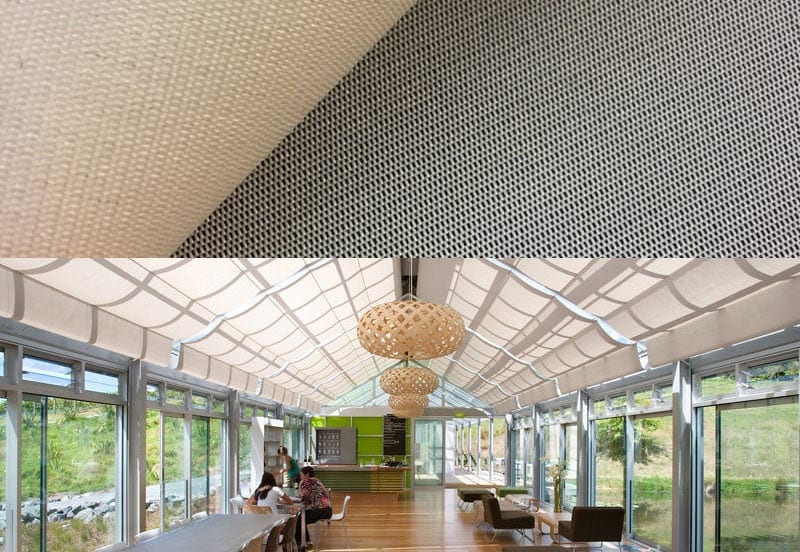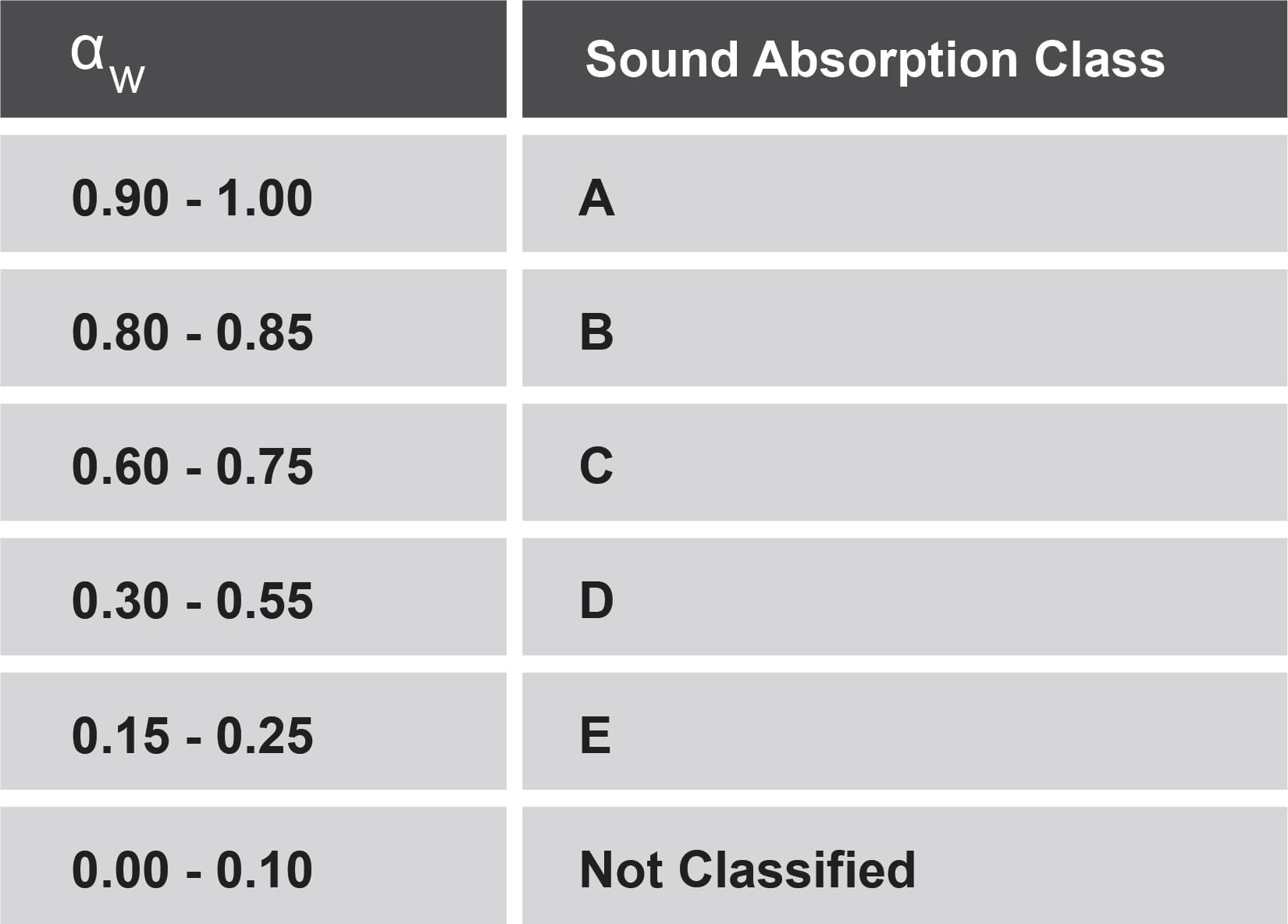Acoustis®: Shades above in performance, aesthetics and safety
Acoustic quality is essential to the effectiveness of any space.
Specifically, acoustics can have a significant impact on concentration, communication and overall well-being, so a well-planned interior is central to improving the quality of all living and working environments.
Acoustis roller shade and sun shading systems offer an acoustic sound absorption solution.

Projects Using Acoustis Fabric
Suspended spinnaker sails and fabric wall panels

Chapel / Auditorium using suspended acoustic spinnakers and stretched fabric wall panels.
αw = 0.70

Roller Shades

Classroom using Acoustis roller shades in colour charcoal.
αw = 0.55

Ceiling Panels

Aquatic Centre using Acoustis lined ceiling treatment under decorative timber batons.
αw = 0.70

Digitally Printed Acoustic Banners

Shopping centre using Acoustis fabric as digitally printed advertising and acoustic drops.

Winter Garden Shading System

Wine bar, Acoustis retractable winter garden shading system.
αw = 0.45
Stretched Ceiling

Museum atrium installed with stretched Acoustis ceiling panels.
αw = 0.45
Stretched Acoustic Wall Panel

Frame mounted acoustic wall panels.
αw = 0.7
Acoustic Information
WHY CHOOSE CLIMATE READY FABRICS’ ACOUSTIS COLLECTION?
Beyond Acoustis’ visual appeal and decorative capability, Acoustis has broken new ground, being the first patented acoustic fabric solution to be based exclusively on weaving coated fibreglass with a special weft and a controlled diameter.
Not only does this special weave significantly reduce sound reverberation, but perfect control of the material’s porosity means that sound waves are effectively absorbed without need for adding harmful fibrous or porous materials that could pose inhalation risks.
Acoustis fabrics also have optimal aeration because the material has no thermal resistance. This guarantees good natural ventilation even in humid environments.
Not only is Acoustis the most effective option, it’s the safest.
BY WHAT ACOUSTIC STANDARDS ARE ACOUSTIS PRODUCTS TESTED?
Climate Ready Fabrics’ Acoustis collection has been tested to Australian and internationally recognised standards for acoustic sound absorption.
Reference:
AS ISO 354–2006 “Acoustics – Measurement of sound absorption in a reverberation room”
AS ISO 11654–2002 (ISO 11654:1997) “Acoustics – Rating of sound absorption – Materials and systems”
WHY IS ACOUSTIC CONTROL IMPORTANT?
In communal spaces such as restaurants, meeting rooms, sports complexes, covered swimming pools, and railway stations, natural social discussion creates a high sound level (75 to 95 decibels) which can be perceived as quite clamorous. When this noise reaches a certain value, people have to raise their voices or even shout to continue to communicate.
In order to maintain the functionality of these spaces and limit discomfort, research has shown that it is ideal to keep sound below 72 decibels, hence the need for materials capable of acoustic absorption.
HOW IS THE ACOUSTIC SUITABILITY OF MATERIALS MEASURED?
It is important that the acoustics of a space are aligned with its architectural function and because some materials absorb sound energy better than others, selecting an appropriate material to use on the walls of a room is pivotal to its acoustic quality.
The suitability of material is assessed using the alpha Sabine coefficient (αw) per frequency, which is a ratio comparing the sound energy absorbed by a given material to the incident energy (or initial sound energy before striking the given material ).
alpha Sabine coefficient (αw) = | Absorbed energy |
Without absorption, reverberation time and sound level increase, decreasing the overall functionality and ambience of the space.
How is Acoustic Absorption Assessed?
The acoustic absorption capacity of a given material is expressed by its alpha Sabine coefficient (αw) in the 3 octave bands:
bass (below 200 Hz)
medium (200 to 2000 Hz)
treble (above 2000 Hz)
This result is expressed as a number between 0 and 1 with optimal materials tending towards 1. In other words,
0 = total sound reflection
1 = total sound absorption
For ease of comparing products for application in buildings, sound absorption ratings are then classified into five classes: A – E

The international standard ISO 11654 breaks absorption performance into five classes, from A to E for the comparison of products for application in buildings.
How Does Acoustis Fabric Perform
Depending on installation, style, purpose and octave band, Acoustis fabric ranges in acoustic performance. For example:
Roller Shades
At low frequencies: (around 200hz), the fabric absorption is about 0.21 αw.
At medium frequencies: (around 500hz), the fabric absorbs up to half of the incidental sound energy for roller shades at 0.5 αw.
At high frequencies: (above 2000hz) the fabric absorption is about 0.55 to 0.65 αw.
The following graph captures the range of performance of a number of different applications.
Roller Shade
0,3 < α W < 0,55
(depending on gap behind fabric)
Velum
α W = 0,45
Panel on load-bearing structure
0,4 < α W < 0,75
(depending on mounting system)

HOW DO ACOUSTIS ROLLER SHADES COMPARE TO OTHER MATERIALS
